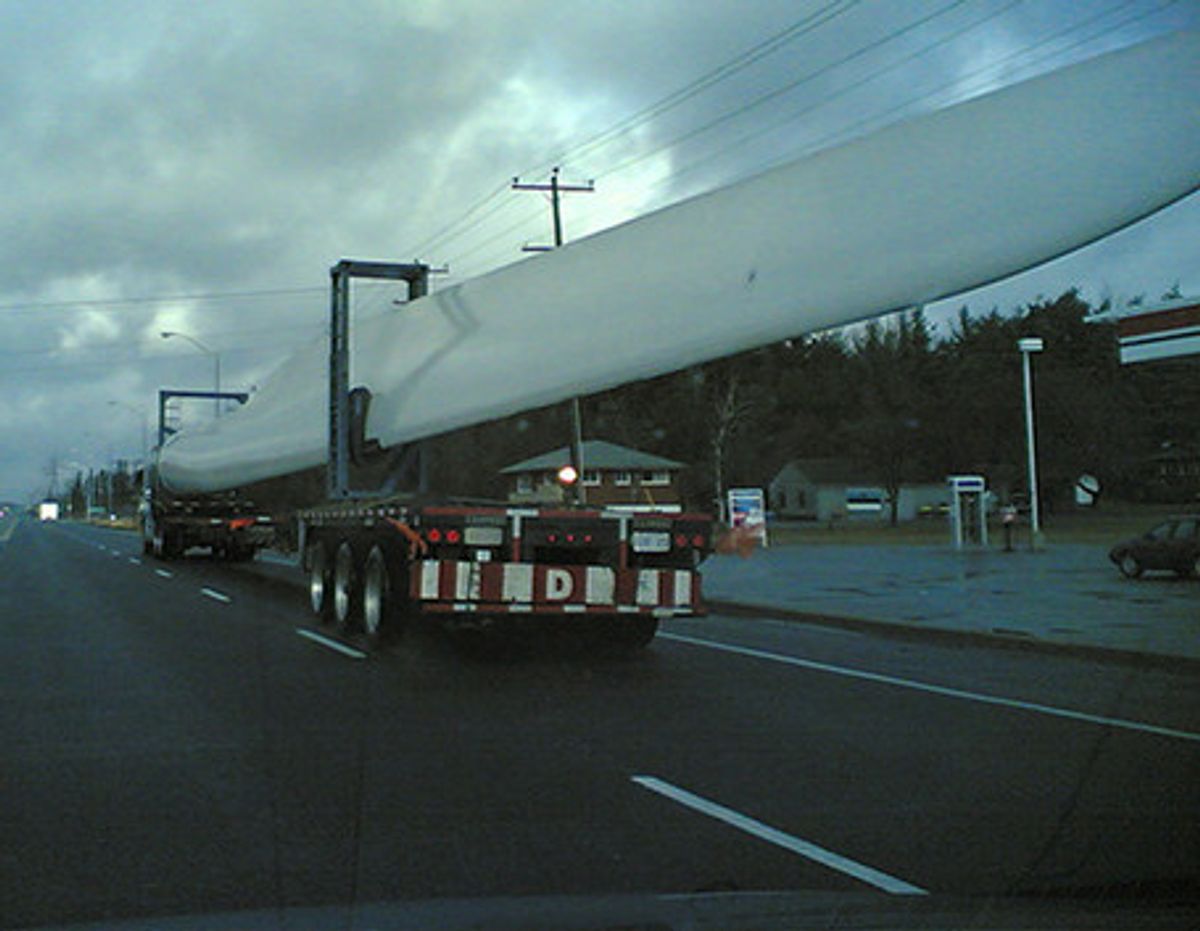At the American Wind Energy Association's Offshore Wind Expo taking place in Baltimore earlier in October, I asked Liz Salerno, AWEA's director of industry data and analysis, what her group's focus was in the coming months. Without hesitation she noted the importance of the Production Tax Credit, the incentive that gives a 2.2 cents-per-kilowatt-hour bonus to companies producing wind energy. The PTC is set to expire at the end of 2012, and the wind industry is lobbying hard for its extension. The renewable energy source, they say, is not yet ready to stand on its own and compete with more entrenched power sources like coal.
There is a push not only from industry but also environmentalists and some politicians -- like the Governors' Wind Energy Coalition -- to help keep wind competitive. But in the meantime, there is substantial work going on to try and bring wind's costs down into coal's range even without government support. To start with, Iowa State University's Wind Energy Manufacturing Laboratory has expressed a goal of bringing wind energy down to six cents per kilowatt-hour -- well in the range of fossil fuels -- by 2020. Among other projects, they're working on ways to ensure the huge turbine blades are made completely smooth, as any imperfections would lower the blade's efficiency and therefore raise costs of producing the power.
Elsewhere, the government entity Advanced Research Projects Agency - Energy, or ARPA-E, is funding a project looking into an aerodynamic technology called circulation control to improve turbine blades' efficiency. Accordingly to ARPA-E, "unlike fixed airfoils, which must be laboriously manufactured to high precision, an effective blown wing can be generated from a slotted extruded pipe that can be domestically manufactured at a fraction of the cost."
And these are just a couple of examples. For a supposedly "mature" technology, wind power most likely has significant room for efficiency -- and therefore cost -- improvements. For the moment, the Production Tax Credit is important to keep wind power moving, but as technology improves in the future it may do just fine on its own.
(Image via sbwoodside)
Dave Levitan is the science writer for FactCheck.org, where he investigates the false and misleading claims about science that U.S. politicians occasionally make.



